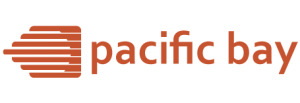The Best Professional Ravioli Makers of 2024: A Comprehensive Comparison
The art of pasta making is a cherished tradition in many cultures, particularly in Italy where ravioli originated. For culinary professionals and restaurateurs, the right equipment is crucial in achieving the perfect ravioli. As 2024 brings new innovations to kitchen technology, we explore the top professional ravioli makers on the market, comparing features that help streamline the process of creating this beloved dish.
## Top Professional Ravioli Makers
### The Luxor PastaMaster 3000
Leading our list is the Luxor PastaMaster 3000, known for its exceptional durability and precision. This model stands out due to its automated dough rolling and stuffing capabilities, which ensure uniformity in size and shape—a must for high-volume kitchens. Its stainless steel construction not only promises longevity but also makes it easy to clean, a vital factor in maintaining hygiene standards in professional settings.
### The Raviolificio Pro Deluxe
The Raviolificio Pro Deluxe is favored for its versatility. This macchinario Raviolatrice professionale can produce up to five different shapes of ravioli, allowing chefs to expand their menu offerings creatively. With attachments for different fillings, the Raviolificio Pro Deluxe makes it easy to switch from meat to cheese or vegetable fillings quickly, boosting kitchen efficiency. Its intuitive digital interface simplifies operation, making it accessible even to less tech-savvy staff.
### The Piatto PastaMaker X200
For kitchens where space is at a premium, the Piatto PastaMaker X200 offers a compact design without compromising on functionality. This model excels in energy efficiency, reducing operating costs—an important consideration for any business. Though smaller, the Piatto PastaMaker X200 still delivers impressive speed and can churn out 200 ravioli per hour, making it an excellent choice for small to medium-sized establishments.
## Features to Consider When Choosing a Ravioli Maker
### Efficiency and Output
The primary consideration for most professional kitchens is the balance between speed and quality. A ravioli maker that can produce a high number of consistently shaped and filled pasta pieces per hour while maintaining quality is essential. Models like the Luxor PastaMaster 3000 are designed to meet the needs of busy restaurants that require both high productivity and precision.
### Versatility and Customization
Chefs often seek the ability to customize their pasta offerings. Machines offering interchangeable molds and variable filling mechanisms provide culinary professionals with the flexibility to innovate and personalize their menu. The Raviolificio Pro Deluxe, with its multiple shape options and easy-to-change filling attachments, stands out in this category.
### Durability and Maintenance
Professional kitchens need equipment that withstands heavy usage. Ravioli makers constructed from high-grade materials such as stainless steel are preferable for their durability and ease of cleaning. Additionally, machines with accessible parts make maintenance simpler, minimizing downtime and repair costs.
## Conclusion
Selecting the right ravioli maker can significantly influence the efficiency of a professional kitchen and the quality of the dishes served. The Luxor PastaMaster 3000, Raviolificio Pro Deluxe, and Piatto PastaMaker X200 each offer unique features that cater to different needs, from high-volume production to space efficiency and versatility. As the culinary industry continues to evolve, these tools will play a vital role in helping chefs achieve their creative visions and satisfy the palates of their customers.


